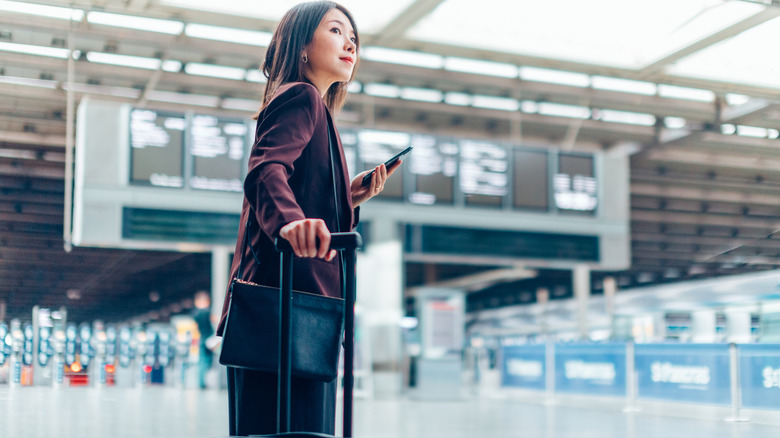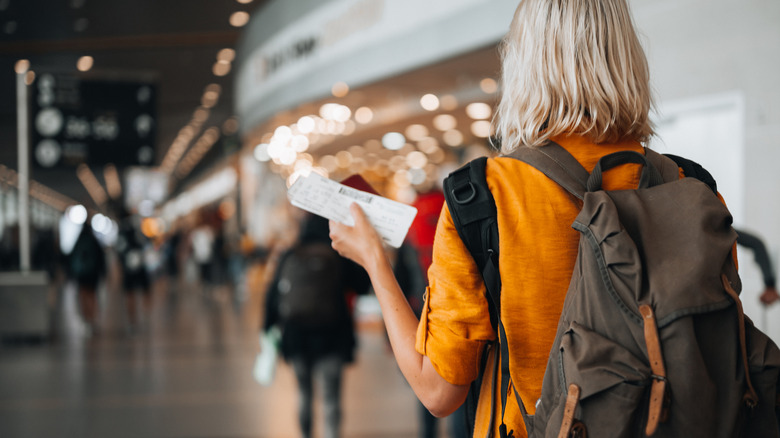What It Means When That Affordable Airfare Is Labeled 'Self-Transfer' And Why Booking It Might Be Risky
Traveling can be expensive, and we all try to cut costs wherever we can, whether it's flying a red eye (or a "pink eye" flight) to save a few bucks or having a friend drive you to the airport. There is one way to get a more affordable flight which you may not know about, though it can be pretty risky. We're talking about self-transfer flights, and you might want to compare the pros and cons before you book one. If you haven't heard of them before, a self-transfer flight is when you have two or more flights to get you to your destination that may involve multiple airlines.
We're not talking about partnership airlines where, for instance, you have the first leg of your flight from New York to Los Angeles on United Airlines and the second leg from LA to New Zealand on Air New Zealand, which are both members of the Star Alliance group. In a self-transfer flight, you could be assigned flights with airlines that aren't affiliated with one another. This could even involve going from one airport to another (which you are responsible for) and having to pick up your checked bags at baggage claim, then going through security again before your next flight. If your stopover is in another country, a self-transfer ticket means you might have to go through immigration, pick up your bags, go back through security, and get on the next flight. If the stopover country requires a visa to leave the secure area, you're responsible for that as well.
How to handle a self-transfer flight
With all of these issues, you may wonder why people would book a self-transfer itinerary. Some people do it because the flight times suit them better, and they may find cheaper flights this way. However, there are some things to take into consideration before you choose this method of travel. One user on Reddit's r/flights said that when they do this, they leave between three and four hours between flights. However, they recommend having money on hand because if you miss your connection due to a delay or cancellation, the airline isn't responsible for rebooking the next leg — you are. They also suggest travel insurance, but make sure you know what's actually covered. Another thing to factor into your budget is any taxi or rideshare costs between airports if needed, as well as any fees for a visa in a stopover country if required.
You should also take into consideration any long walks between terminals, like the over-2-mile walk you can experience at Dallas/Fort Worth. See if the airport has shuttles (which DFW does), and look up the average time from where you land to baggage claim, plus the security line and the walk to the area of the airport your next flight leaves from. Airport maps online can be very helpful here. Keep in mind that it's probably a good idea to avoid the airports that are known for the worst TSA security experiences to lessen some of the burden on travel day.

